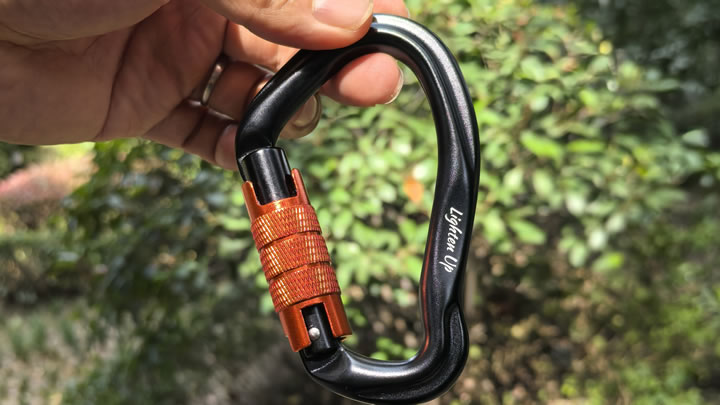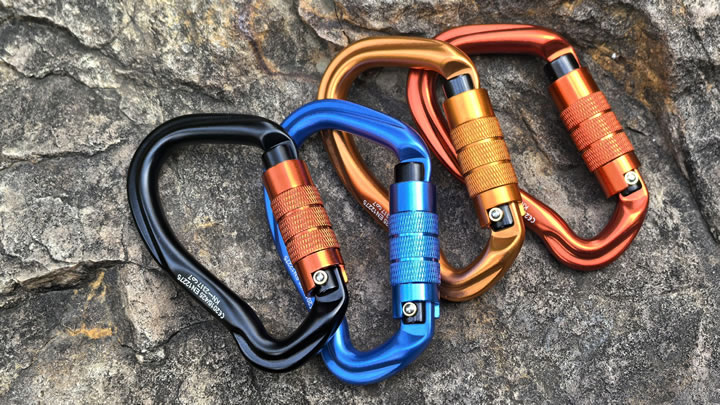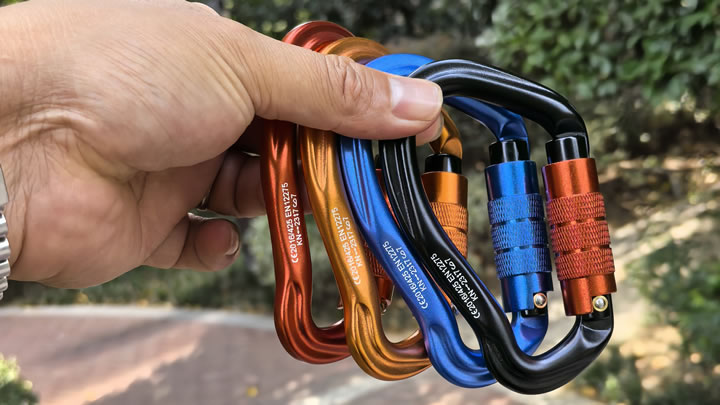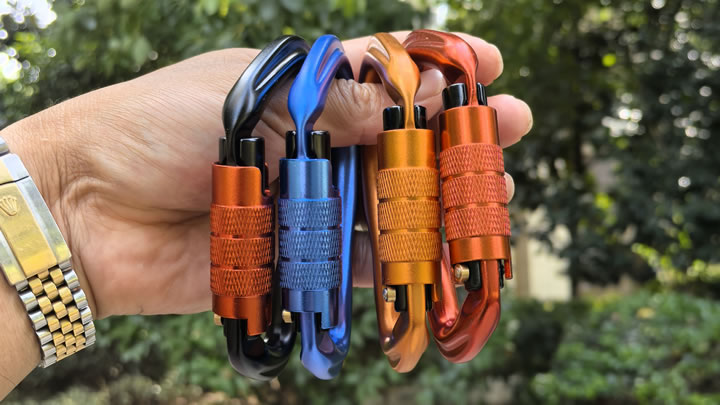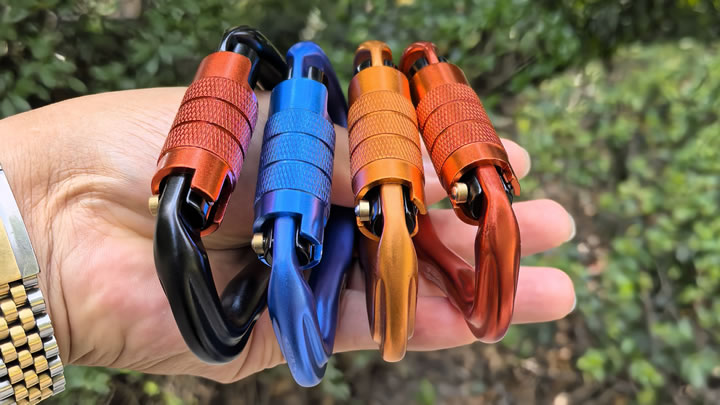Hiking Poles for Uneven Terrain: Your Guide to Stability and Safety
Navigating uneven terrain presents unique challenges that transform hiking poles from optional accessories into essential safety equipment. Rocky paths, root-crossed trails, loose scree, and unpredictable surfaces demand more than just sure footing—they require active stability management. Understanding how to select and use poles specifically for challenging ground can mean the difference between a confident stride and a dangerous fall.
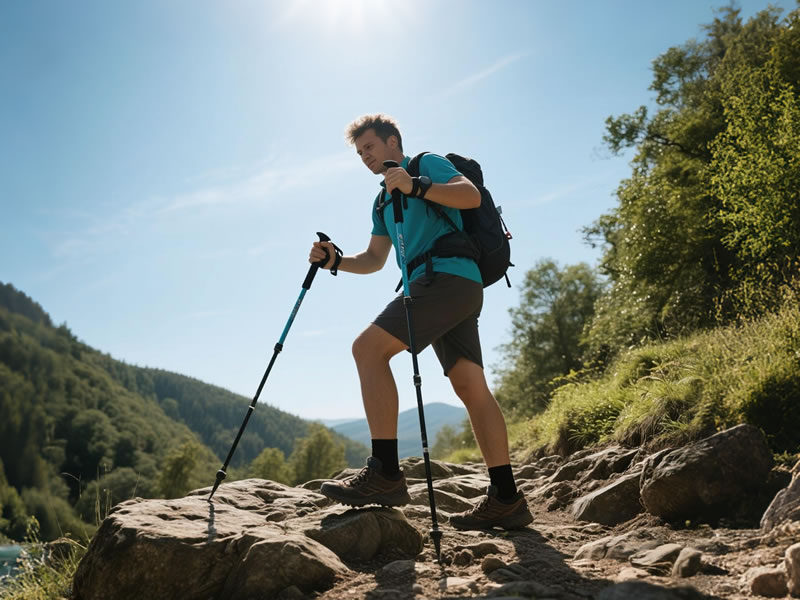
Why Uneven Terrain Demands Special Consideration
Uneven terrain constantly challenges your balance and stability. Unlike smooth trails where poles primarily aid endurance, on rough ground they become crucial tools for:
- Preventing ankle rolls and twists on unstable surfaces
- Testing footing before committing full weight to uncertain ground
- Providing anchor points when crossing loose rock or slippery roots
- Reducing impact on joints during unexpected drops or steps
The consequences of inadequate support on such terrain can be serious, ranging from minor sprains to expedition-ending injuries.
Essential Features for Rough Terrain Poles
Durability Above All
Uneven terrain subjects poles to extraordinary stresses—lateral forces, sudden impacts, and constant abrasion. Prioritize:
- 7075 aluminum alloy for maximum impact resistance and durability
- Reinforced locking mechanisms that won't fail under stress
- Thicker shaft diameters (16-18mm) for increased strength
- One-piece construction in critical stress areas
Secure Locking Systems
When descending a rocky slope or crossing a boulder field, slipping poles can be dangerous. External lever locks consistently outperform twist mechanisms for several reasons:
- Visible confirmation they're properly engaged
- Easier adjustment with cold, tired, or gloved hands
- Less prone to failure when dirty or dusty
- Better resistance to gradual slipping under load
Superior Grip and Control
On technical terrain, you need absolute control over your poles. Look for:
- Cork or molded rubber grips that maintain friction when wet
- Contoured shapes that fit naturally in your hand
- Extended grip areas for different hand positions on steep sections
- Sweat-resistant materials that won't become slippery during exertion
Advanced Tip Technology
Carbide tips are essential for uneven ground, providing:
- Superior penetration into hard-packed earth and between rocks
- Exceptional wear resistance against abrasive surfaces
- Reliable grip on rock and hard surfaces
- Durability that lasts through miles of rough treatment
Technical Considerations for Specific Conditions
Rocky Terrain
- Pole placement becomes strategic rather than rhythmic
- Seek natural crevices and stable platforms for plant points
- Use shorter lengths for better control in tight spaces
- Anticipate rebounds when tips slip off hard surfaces
Root-Covered Trails
- Watch for snag points between roots
- Plant at angles to avoid catching on protruding roots
- Use quick, light placements rather than firm plants
- Keep wrists loose to absorb unexpected catches
Loose Scree and Gravel
- Lengthen poles slightly for better reach on unstable surfaces
- Test each placement before transferring weight
- Use a "double plant" for extra stability on steep sections
- Expect some sinking and plan accordingly
Proper Technique for Maximum Stability
The Strategic Plant
On uneven ground, pole placement requires conscious thought:
- Look ahead to identify optimal planting spots
- Choose stable surfaces rather than simply rhythmically planting
- Vary planting force based on surface reliability
- Maintain light grip pressure to feel the terrain through the poles
Balance and Weight Distribution
- Keep poles close to your centerline for better balance
- Use three-point stability (two poles, one foot) when moving the other foot
- Distribute weight between poles and feet based on surface reliability
- Stay centered rather than leaning heavily on poles
Adapting to Changing Conditions
- Adjust length frequently as terrain angle changes
- Modify grip for uphill, downhill, and sidehill sections
- Change techniques based on immediate terrain demands
- Remain flexible in your approach as conditions evolve
Recommended Poles for Technical Terrain
Based on extensive testing and user feedback, these models excel on uneven ground:
Black Diamond Trail Pro Shock
- Why it works: Aluminum construction withstands impacts, shock absorption reduces arm fatigue, reliable FlickLock Pro adjustment
- Best for: Regular use on consistently rough trails
- Weight: 19 oz per pair
LEKI Sherpa FX
- Why it works: Durable HTS 6.5 aluminum, secure locking system, comfortable grip
- Best for: Heavy use in demanding conditions
- Weight: 20 oz per pair
Komperdell Power Lock Light
- Why it works: Excellent durability, secure locking, good value
- Best for: Budget-conscious hikers needing reliability
- Weight: 18 oz per pair
Common Mistakes and How to Avoid Them
Over-reliance on Poles
Poles supplement good technique; they don't replace it. Maintain focus on:
- Careful foot placement
- Proper balance and body position
- Situational awareness beyond your immediate pole plants
Improper Length Adjustment
Many hikers use the same length for all terrain. Remember:
- Shorten for uphill and technical sections
- Lengthen for downhill and more open terrain
- Adjust for sidehill traverses (uphill pole shorter)
Poor Maintenance Habits
Rough terrain accelerates wear. Regular maintenance should include:
- Checking tips for wear and damage
- Inspecting locks for proper function
- Cleaning mechanisms after dusty or muddy use
- Replacing worn components before they fail
Advanced Techniques for Experienced Hikers
The "Double Plant" for Stability
When facing particularly unstable sections, planting both poles simultaneously provides a stable platform for moving feet. This technique is especially valuable when:
- Crossing loose rock fields
- Navigating slippery wooden surfaces
- Managing exceptionally steep sections
The "Pole Drag" for Balance
Maintaining light contact with the ground between plants provides continuous sensory feedback about the terrain. This advanced technique helps with:
- Maintaining rhythm on variable surfaces
- Early detection of surface changes
- Subtle balance corrections
Strategic Pole Placement
Learn to "read" the terrain for optimal pole plants:
- Seek cracks in rocks for secure placements
- Avoid loose material that might shift
- Use angles to create stable platforms
- Plan sequences rather than random placements
Safety Considerations
While poles significantly improve safety on uneven terrain, remember:
- They're not substitutes for proper judgment
- Test doubtful placements before committing weight
- Carry repair parts for extended trips
- Know when to stow poles and use hands instead
Conclusion: Confidence Through Proper Preparation
The right poles, combined with proper technique, can transform challenging terrain from intimidating to manageable. By choosing durable, reliable equipment and developing terrain-specific skills, you'll not only enhance your safety but also expand your hiking capabilities.
Remember that mastery comes through practice. Start with moderately challenging terrain to build skills and confidence before progressing to more technical environments. Your poles should feel like natural extensions of your arms, providing information and support without conscious thought.
Investing in quality poles designed for uneven terrain and dedicating time to develop proper technique will pay dividends in safety, comfort, and enjoyment on all your outdoor adventures. The mountains may present challenges, but with the right equipment and knowledge, you'll be prepared to meet them with confidence.

